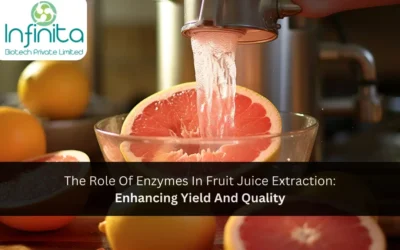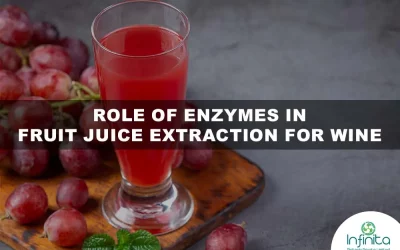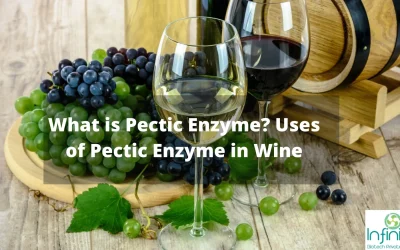Juice extraction is a fundamental process in the production of high-quality fruit juices. Traditionally, mechanical methods have been employed to break down the fruits and extract the juice. However, recent advancements in technology have introduced the use of enzymes to enhance the juice extraction process. Enzymes, which are naturally occurring proteins, play a crucial role in various biochemical reactions. When applied to juice extraction, enzymes have shown numerous benefits, including improved juice yield, enhanced nutrient retention, and better taste and texture.
Understanding Enzymes in Juice Extraction
Before delving into the benefits and techniques of enzyme-enhanced juice extraction, it is essential to have a clear understanding of what enzymes are and how they function. Enzymes are biological catalysts that enhance the rate of chemical reactions without being consumed in the process. In juice extraction, enzymes act as catalysts to break down the cell walls of fruits, releasing the juice trapped within.
What are Enzymes?
Enzymes are protein-based molecules that are vital for various biological processes. They have a specific three-dimensional structure that enables them to bind with specific molecules, known as substrates. This binding results in the activation of the enzyme, leading to the catalysis of the desired reaction. In the context of juice extraction, enzymes play a crucial role in breaking down the cellular structure of fruits, facilitating the release of juice.
Role of Enzymes in Juice Extraction
Enzymes play a pivotal role in enhancing the juice extraction process. The cell walls of fruits contain complex polysaccharides, such as pectin, cellulose, and hemicellulose, which are responsible for the structural integrity of the fruit. These polysaccharides create a barrier that prevents the easy release of juice. Enzymes, such as pectinases and cellulases, break down these polysaccharides, enabling efficient juice extraction.
Furthermore, enzymes are highly specific in their action, targeting particular substrates based on their molecular structure. For example, pectinases specifically target pectin, a polysaccharide that forms the primary component of the middle lamella in plant cells. By breaking down pectin, pectinases help to soften the cell walls of fruits, making it easier to extract juice during the pressing or crushing process.
Moreover, the temperature and pH levels during the juice extraction process play a crucial role in determining the effectiveness of enzymes. Enzymes have an optimal temperature and pH range at which they function most efficiently. Deviating from these optimal conditions can denature the enzymes, rendering them inactive. Therefore, maintaining the ideal temperature and pH is essential to ensure that the enzymes remain active throughout the juice extraction process, maximizing the yield of extracted juice.
The Science Behind Enzyme-Enhanced Juice Extraction
To understand the science behind enzyme-enhanced juice extraction, it is important to explore the extraction process and the different types of enzymes used.
Enzyme-enhanced juice extraction is a fascinating process that combines the principles of biochemistry with food technology. By harnessing the power of enzymes, manufacturers are able to optimize the extraction of juice from fruits, leading to higher yields and improved quality.
The Extraction Process
The extraction process typically involves the mechanical maceration of the fruits to break down the cell walls and release the juice. However, this mechanical process is not always efficient in separating the juice from the fruit pulp. Enzyme-enhanced juice extraction involves the application of enzymes during the maceration process to facilitate the breakdown of cell walls and improve juice yield.
During maceration, the enzymes work by targeting specific components of the fruit cell walls, such as pectin and cellulose, which can hinder the release of juice. By breaking down these barriers, the enzymes help to liberate more juice from the fruit matrix, resulting in a higher extraction efficiency.
Enzyme Types and Their Functions
Various enzymes can be used in juice extraction, each with specific functions. Pectinases, for example, target pectin, a major component of fruit cell walls, and break it down into smaller molecules. This allows the juice to flow more freely. Cellulases, on the other hand, target cellulose, aiding in the breakdown of the fibrous structure of fruits and further enhancing juice extraction.
Additionally, enzymes like hemicellulases and proteases can also play a role in juice extraction by breaking down hemicellulose and proteins, respectively. Each enzyme acts on a specific substrate, contributing to the overall efficiency of the extraction process. The careful selection and combination of enzymes are key to achieving optimal juice yield and quality.
Benefits of Using Enzymes in Juice Extraction
The use of enzymes in juice extraction offers several benefits compared to traditional mechanical methods. These benefits include improved juice yield, enhanced nutrient retention, and a superior taste and texture.
Enzymes are biological catalysts that play a crucial role in breaking down complex molecules into simpler forms. In the context of juice extraction, enzymes target the structural components of fruits, such as cellulose and pectin, to release a higher volume of juice. This natural process not only increases the yield but also reduces the amount of waste generated during extraction.
Improved Juice Yield
Enzyme-enhanced juice extraction enables greater juice yield compared to traditional methods. The breakdown of cell walls by enzymes allows for more efficient extraction of juice from the fruits, resulting in higher yields.
Furthermore, enzymes work synergistically with the fruit’s own enzymes to maximize the release of juice. This cooperative action ensures that every drop of juice is extracted, leading to a more economical and sustainable juice production process.
Enhanced Nutrient Retention
Enzymes facilitate the extraction of juice while minimizing damage to the nutritional content of the fruits. By effectively breaking down cell walls, enzymes ensure that a higher proportion of bioactive compounds, vitamins, and minerals are retained in the juice.
Moreover, the gentle action of enzymes preserves the delicate nutrients present in the fruits, which may be compromised by the heat and mechanical force used in traditional extraction methods. This preservation of nutrients enhances the overall health benefits of the juice, making it a more wholesome choice for consumers.
Better Taste and Texture
The use of enzymes in juice extraction can improve the overall taste and texture of the juice produced. Enzymes aid in the breakdown of fibrous components, resulting in a smoother and more palatable juice.
Additionally, the enzymatic process helps to release natural sugars and flavor compounds locked within the fruit cells, enhancing the sweetness and aroma of the juice. This results in a more flavorful and enjoyable drinking experience for consumers, setting enzyme-extracted juices apart from their conventionally processed counterparts.
Techniques for Enzyme-Enhanced Juice Extraction
To achieve optimal results in enzyme-enhanced juice extraction, various techniques can be employed. These techniques include pre-treatment methods, enzyme application techniques, and post-extraction processing.
When it comes to pre-treatment methods, the goal is to ensure that the fruits are in the best possible condition for enzyme application. This may involve a series of steps such as washing the fruits to remove any dirt or debris, sorting them to eliminate damaged or overripe fruits, and crushing them to break down the cell structure and release more juice. By properly preparing the fruits, the enzymes can work more effectively, leading to higher juice yields.
Pre-Treatment Methods
Pre-treatment methods are employed to prepare the fruits for enzyme application. This may include washing, sorting, and crushing the fruits to facilitate enzyme penetration and maximize juice extraction efficiency.
Enzyme application techniques play a crucial role in the success of the extraction process. Different techniques can be used to apply enzymes to the fruits, such as direct addition, dip treatment, or spraying. The choice of technique depends on factors like the type of enzyme being used, the fruit’s characteristics, and the desired level of enzyme penetration. Each method has its advantages and is selected based on its efficiency in breaking down the fruit’s cell walls and releasing the juice trapped within.
Enzyme Application Techniques
Enzymes can be applied to the fruits through various techniques, such as direct addition, dip treatment, or spraying. The chosen technique depends on the specific characteristics of the fruits and the desired level of enzyme penetration.
Post-extraction processing is a critical step in ensuring the quality and safety of the final juice product. Techniques such as filtration, clarification, and pasteurization are commonly used to remove any remaining solids, impurities, or microorganisms from the juice. Filtration helps to achieve a clear and smooth juice consistency, while clarification further refines the juice by removing any cloudiness or sediment. Pasteurization, on the other hand, involves heating the juice to kill harmful bacteria and enzymes, extending its shelf life and ensuring consumer safety.
Post-Extraction Processing
After the extraction process, post-extraction processing techniques can be employed to further enhance the quality of the juice. These techniques may include filtration, clarification, and pasteurization, ensuring a clean and stable final product.
Challenges and Solutions in Enzyme-Enhanced Juice Extraction
While enzyme-enhanced juice extraction offers significant benefits, there are also challenges that need to be addressed for successful implementation.
Common Obstacles in Enzyme Use
One of the common obstacles in enzyme use is the potential for enzyme inactivation due to factors such as pH, temperature, or the presence of inhibitors. It is crucial to optimize the enzyme conditions to ensure their stability and effectiveness during the extraction process.
Overcoming Challenges in Enzyme Application
To overcome challenges in enzyme application, proper process control and monitoring are essential. This includes maintaining optimal pH and temperature conditions, selecting suitable enzyme types and concentrations, and considering the specific requirements of different fruits.
In conclusion, the use of enzymes in juice extraction offers significant benefits for large-scale juice production. Understanding the science behind enzymes, their role in juice extraction, and the techniques for enzyme application is crucial for successful implementation. By optimizing the extraction process and overcoming challenges, juice producers can enhance juice yield, retain nutrients, and produce juices with superior taste and texture. Enzyme-enhanced juice extraction truly opens up new possibilities for the fruit juice industry.





